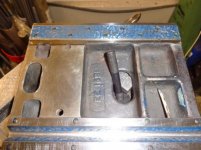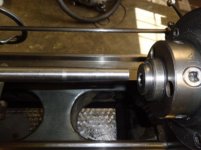jakefreese
Hot Rolled
- Joined
- Aug 4, 2012
- Location
- TEXAS
I need to refurb the tailstock on my AA.
I had seen the thread where the SB 10 was bored on the machine, this looks like a good way to go as I could get the help of one of the local guys to do the work. But I started pricing materials to do the work, and it brings up the problem of many of the pieces that are needed to do this are a one time use. Are there other ways to attack this and not have to spend a bunch on material that will only be used for the boring work only to get set on the material rack as an ornament. My other thought is send it out to a shop that can bore, sleeve, hone and get the quill ground and chromed. How would the accuracy be on a shop boring this referencing off the base of the tailstock? I just do not have the experience to be able to jump into this and get an acceptable finished piece by myself.
Thanks guys!
I had seen the thread where the SB 10 was bored on the machine, this looks like a good way to go as I could get the help of one of the local guys to do the work. But I started pricing materials to do the work, and it brings up the problem of many of the pieces that are needed to do this are a one time use. Are there other ways to attack this and not have to spend a bunch on material that will only be used for the boring work only to get set on the material rack as an ornament. My other thought is send it out to a shop that can bore, sleeve, hone and get the quill ground and chromed. How would the accuracy be on a shop boring this referencing off the base of the tailstock? I just do not have the experience to be able to jump into this and get an acceptable finished piece by myself.
Thanks guys!






